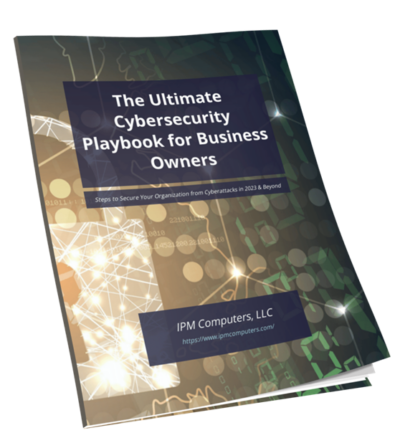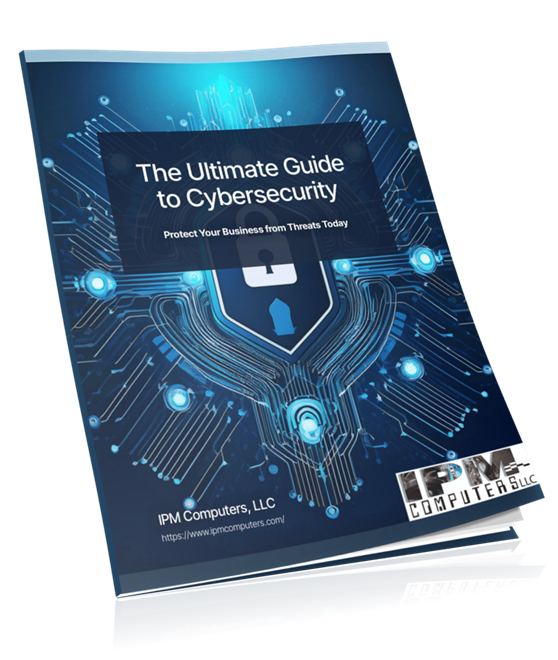Your business is growing, and suddenly IT feels like a full-time job you never signed up for.
Last week, your email went down for three hours during a client presentation. Yesterday, someone clicked a suspicious link and now you’re wondering if your data is safe. Tomorrow, you need to onboard two new employees but have no idea how to set up their accounts securely. Meanwhile, that software update notification has been sitting on your screen for six months because you’re terrified it’ll break something.
Sound familiar? You’re living the reality of countless growing businesses that hit the IT complexity wall. The technology that once felt manageable with a few computers and a basic internet connection has morphed into a complex ecosystem that demands expertise you don’t have time to develop.
This is exactly where managed IT services make sense, especially for small and medium businesses in that awkward growth phase where you’re too big to wing it but not quite ready for a full IT department.
The Real Cost of DIY Technology Management
Most business owners think they’re saving money by handling IT themselves or relying on that one tech-savvy employee who “knows computers.” But let’s look at what this actually costs.
When your systems go down, every employee becomes unproductive. If you have 10 employees making an average of $30 per hour, a four-hour outage costs you $1,200 in lost productivity alone. That doesn’t include lost sales, damaged reputation, or the overtime you’ll pay catching up.
Then there’s the security risk factor. Small businesses are prime targets for cybercriminals precisely because they often lack proper protection. The average ransomware attack costs SMBs around $200,000 when you factor in downtime, recovery, and lost business. One successful attack can literally end a small company.
Your tech-savvy employee doing IT on the side? They’re probably great, but they’re also learning as they go, making expensive mistakes, and taking twice as long as a specialist would. Plus, when they’re fixing computers, they’re not doing the job you actually hired them for.
What Managed IT Actually Means for Your Business
Managed IT isn’t just outsourced tech support, though that’s part of it. It’s having a team of specialists who proactively manage your entire technology infrastructure so you can focus on growing your business.
Think of it like this: you wouldn’t try to be your own accountant, lawyer, and marketing department. You hire specialists for those roles because they have expertise you need but don’t want to develop internally. Managed IT follows the same logic.
A managed service provider becomes your technology partner. They monitor your systems 24/7, catching problems before they become disasters. They handle updates and patches during off-hours, so nothing interrupts your workday. They plan for your growth, ensuring your technology scales with your business instead of holding it back.
The proactive part is integral. Instead of waiting for things to break, managed IT providers prevent problems. They spot the failing hard drive before it crashes. They identify the security vulnerability before hackers exploit it. They notice unusual network activity that might indicate a breach attempt.
Strategic Technology Planning That Actually Happens
Growing businesses often treat technology reactively. Something breaks; you fix it. You need new software; you buy it. Someone quits; you figure out their passwords. This approach creates a frankenstein technology environment that becomes increasingly unstable and expensive.
Managed providers bring strategic planning to your technology decisions. They help you build a technology roadmap aligned with your business goals. Planning to double your workforce next year? They’ll make sure your infrastructure can handle it. Opening a second location? They’ll design connectivity that links your offices seamlessly.
This planning extends to budgeting too. Instead of surprise expenses when equipment fails, you get predictable monthly costs. No more emergency purchases because a server died at the worst possible moment. Your technology expenses become a stable line item you can actually plan around.
They also help you avoid expensive mistakes. That amazing software deal might not integrate with your existing systems. The cheaper equipment might cost more in downtime and maintenance. Those free tools might violate compliance requirements. A managed provider evaluates technology decisions through the lens of your entire ecosystem.
Security That Matches Modern Threats
Cybersecurity isn’t optional anymore, but it’s also incredibly complex. Hackers use sophisticated tools and constantly evolving tactics. Defending against them requires expertise and vigilance that most SMBs simply can’t maintain internally.
IT providers implement multilayered security strategies. Firewalls, antivirus, and backup systems form the foundation. Employee training reduces human vulnerability. Access controls ensure people only reach data they need. Monitoring systems watch for suspicious activity around the clock.
When security incidents do occur, response time matters. Managed providers have incident response procedures ready to go. They know how to contain breaches, preserve evidence, and restore operations quickly. They also handle the compliance requirements many industries face, keeping you aligned with regulations that carry serious penalties for violations.
The Productivity Multiplier Effect
Here’s something business owners often miss: good IT management makes your entire team more productive. When systems work reliably, employees stop wasting time on workarounds. When the right tools are properly configured, tasks that took hours might take minutes.
Managed IT optimizes your existing systems for performance, eliminating the bottlenecks slowing your team down. They automate repetitive tasks that waste human creativity. They integrate disconnected systems, so information flows smoothly.
They also become your help desk, giving employees immediate support when they need it. No more waiting for the tech-savvy colleague to have free time. No more losing entire days to simple problems. Professional support means issues get resolved quickly by people who know what they’re doing.
Scaling Without the Growing Pains
Growth should be exciting, not terrifying. But for many SMBs, expansion brings technology nightmares. New employees need equipment and accounts. New locations need connectivity. New services need infrastructure. Each growth step becomes a technical challenge that distracts from actual business development.
Managed IT providers smooth these transitions, maintaining standardized processes for onboarding new employees, complete with security training and properly configured accounts. They design network architecture that easily accommodates new locations. They ensure your infrastructure has room to grow before you need it.
This scalability extends to downsizing, too. Economic conditions change. Businesses pivot. Sometimes you need to contract quickly without getting stuck with expensive technology commitments. Managed IT services flex with your needs, scaling up or down as your business requires.
Frequently Asked Questions About Managed IT
How much do managed IT services typically cost for small businesses?
Most managed IT services for small businesses range from $75 to $150 per user per month, or $500 to $2000 monthly for comprehensive small office support. Costs depend on service levels, number of devices, and specific needs like compliance requirements. While this might seem expensive initially, it’s typically less than one major IT incident would cost to resolve, and far less than hiring even a part-time IT employee with benefits.
What’s the difference between break-fix IT support and managed services?
Break-fix support means calling for help when something breaks, then paying hourly rates for fixes. Managed services means paying a predictable monthly fee for proactive monitoring, maintenance, and support. Break-fix seems cheaper until you factor in downtime costs, emergency rates, and the fact that problems often cascade without preventive care. Managed services focus on preventing problems rather than just fixing them.
Can managed IT services work with our existing technology staff?
Absolutely. Many growing businesses use managed services to augment internal IT staff. Your employee handles day-to-day tasks and strategic projects while the managed provider handles monitoring, security, help desk overflow, and specialized expertise. This co-managed approach gives you the best of both worlds: internal knowledge of your business plus external expertise and coverage.
How quickly can a managed IT provider respond to problems?
Response times vary by service level, but most managed IT providers guarantee response within 15-30 minutes for critical issues. Many problems get resolved remotely within an hour. For onsite needs, response typically happens within 4 hours or next business day, depending on your agreement. The key difference is that proactive monitoring often catches and fixes problems before you even notice them.
What happens to our data if we switch managed IT providers?
Reputable managed IT providers maintain clear data ownership policies: your data remains yours. They should provide complete documentation of your systems, credentials, and configurations. Migration support to a new provider or back to internal management should be part of any professional exit process. Always verify data ownership and exit procedures before signing any managed services agreement.
Making the Switch to Managed IT
The question isn’t really whether you need better IT management. If you’re reading, you probably already know your current approach isn’t sustainable. The question is whether managed IT make sense for your specific situation.
Consider managed IT if technology problems regularly disrupt your business, if you’re concerned about security but lack expertise to address it, if IT costs are unpredictable and stressful, or if growth plans depend on technology you don’t fully understand.
The right provider becomes a strategic partner in your growth, not just a technical support resource. They help you leverage technology for competitive advantage instead of just keeping the lights on.






